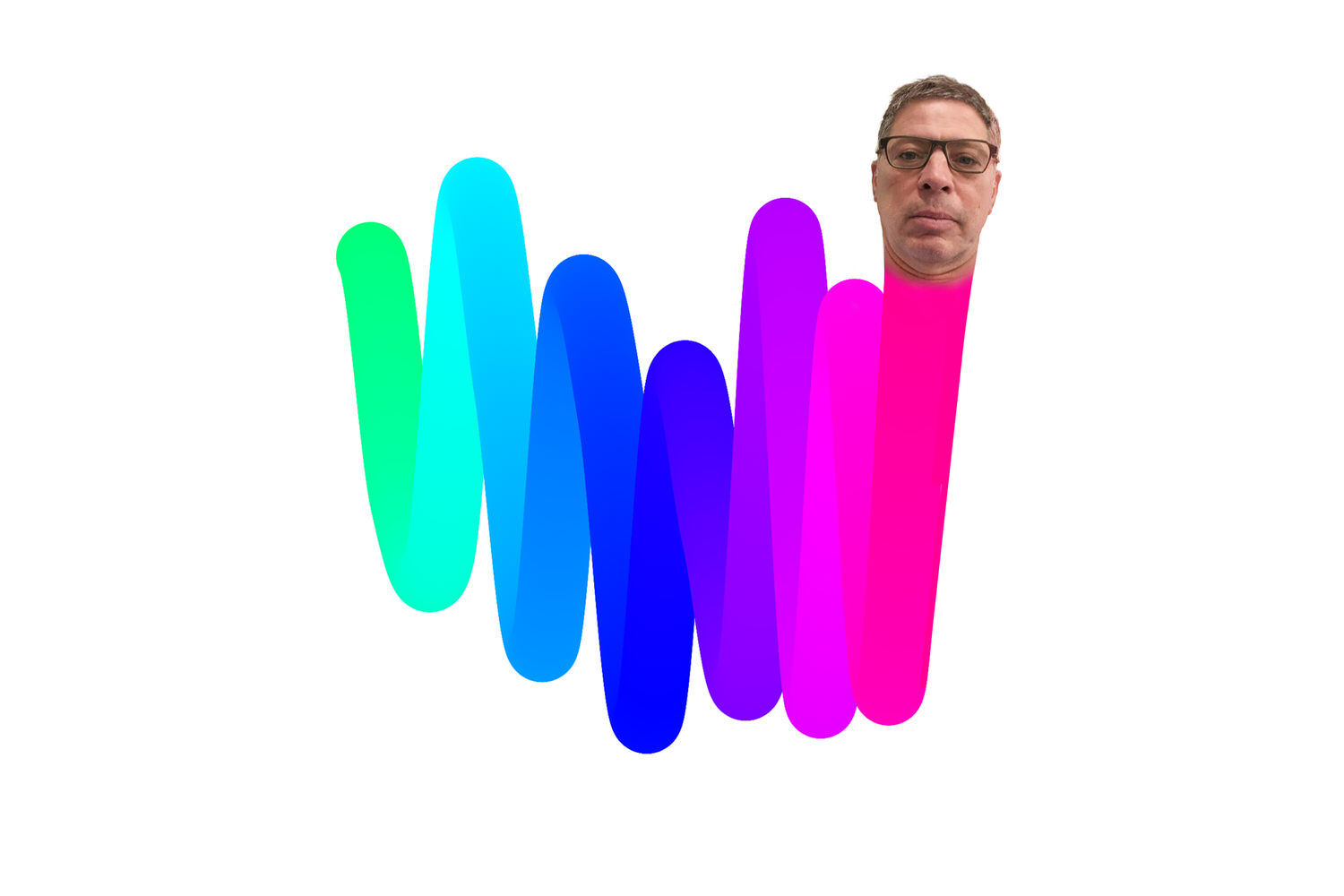Adam Lindeman as Chromie Squiggle
Remember last month when I wrote that I was done writing for a while? Well, I lied (if you can’t contradict yourself…). You didn’t think I’d actually give up this platform, did you?
If you hadn’t heard, I returned to Miami Basel this year in an altogether different guise than usual, that of an artist showing with German gallery Nagel Draxler—where I will have a solo show next month in Berlin. Although Miami was transformed into an NFTism mecca, with more ancillary events and parties than fashion brands feeding off the fair mothership as in years past, some things will never change (i.e. the raunchy vulgarity that characterizes South Beach).
One morning I spent an hour scouring the city for a single newspaper, to no avail, but did find plenty of Cuban coffee which was closer in consistency to Saudi crude oil, packing a commensurate wallop that fueled me for days.
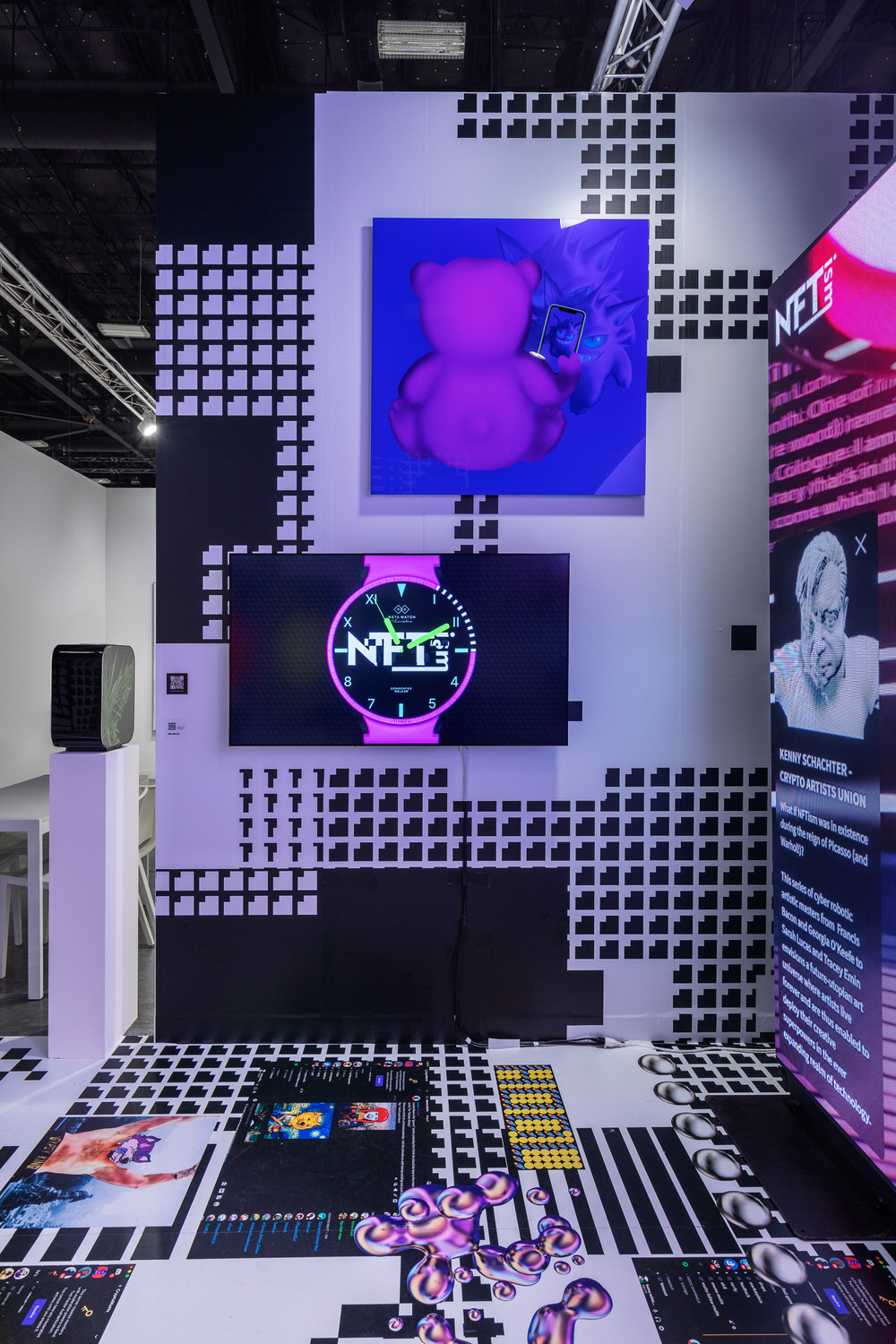
Nagel Draxler Art Basel Miami install of booth I designed: our actual watch went stolen in no time! Miami, ugh
Since attending the very first Art Basel in Miami in 2002, I’ve been too self-conscious to don a pair of shorts, much less swim, amidst the sea of fellow artworlders. I also managed to avoid going out altogether. Though venturing to dinner was nearly as bad—at a night at the Setai Hotel, meant to be among Miami’s finest, amid blaring music that would exasperate Ozzy Osbourne, I encountered a random patron that launched into a free associative dance, hurling her body across the restaurant like a particle in an atom smasher. The video I shot of the spectacle went a little viral on Instagram, logging more than 50,000 viewers at last count, before (no surprise), coming to the attention of Louise Monger, the perpetrator, who hails from Chicago. I must say dance monger Louise was quite a good sport about the ordeal, and we are planning a collaborative performance coming soon.
During the fair set-up, I lost my installer’s badge within hours. Meanwhile, Martin Welker, with whom I collaborated on an NFTism watch, lost all our watches and his iPad to local thieves minutes after checking into his hotel. Then got Covid. I wanted to shake off Miami like a wet dog before the festivities even began. Thankfully, for some reason, my bathroom in the Don and Mera-owned Albion Hotel came equipped with a life preserver, which I clung to for most of my trip. There was also a generous balcony, which made up for the lack of most other amenities, like room service or a minibar (so I had to do without Pringles). I turned the space into an impromptu spray booth to paint my sculptures, leaving quite a history of residue. Let’s keep that between us.
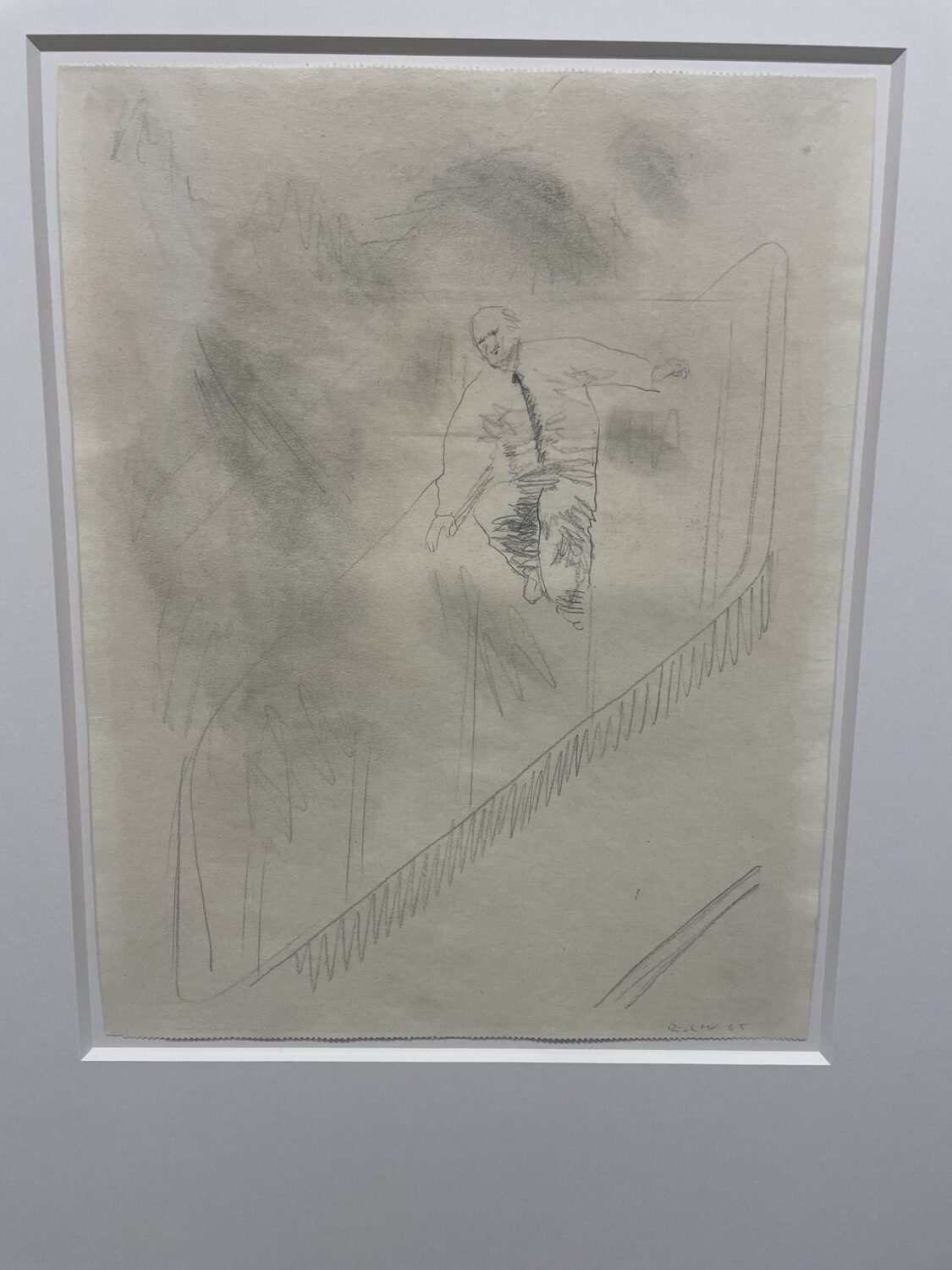
Richter’s businessman descending a staircase, my title from 1965, at Sies and Höke.
Things didn’t improve throughout the duration of the trip. I felt like an interloper much of the time—and practically had a nervous breakdown from the anxiety of being situated among such great artists (and covetable art), from early Sigmar Polke and Gerhard Richter drawings at Sies and Höke, ranging from about $100,000 to $500,000, to Mary Heilmann paintings at 303 Gallery, starting at $70,000. Old hoarding habits die hard and I grabbed a few things before the gates opened, including a Heilmann. Speaking of which, the third iteration of my online Hoarder Sale (with no reserves—my loss is your gain!) goes live December 15 to 21 at Sotheby’s with a physical exhibition in their London showroom this go-round.)
I skipped the first VVIP opening from sheer exhaustion, and because I know from being on the other side of the equation that there’s nothing more annoying than an artist loitering around a booth during showtime. I left the second VIP event early to speak to the Maryland Institute College of Art from the confines of my hotel lobby—a satisfying distraction. Afterward, I ended up on a panel sponsored by Space Metaverse staged on a booze-soaked cruise ship, a fitting enough context for Miami, shouting over the din of party goers, which had me longing to become an inhabitant of a distant digital domain somewhere, anywhere but there.

A typical night out for me! In bed by 9 p.m., and none too soon
I was so preoccupied with my work—the wall of LED screens showcasing our own metaverse that I commissioned from Zaha Hadid didn’t begin to properly function until visitors poured in—I didn’t manage to do much outside of the convention center. In other words, no NADA, and only a brief tour of Untitled, where I saw cool works at L.A.’s Steve Turner by Jingze Du, priced from $7,500 to $26,000 (I bought a painting), and Kate Klingbeil from $6,500 to $12,000, and at L21 from Mallorca (Spain), ceramics by Mira Mikai.
Just prior to the fair, Art Basel director Marc Spiegler was quoted in the Financial Times downplaying “the impact of technology on the look and feel of the in-person Miami fair,” while nevertheless acknowledging that the “kinetic energy in town is much higher than it was in 2019.” I’m not entirely sure what Spiegler was referring to exactly, unless he too witnessed Louise Monger’s kinematic dancing. However, NFTism reared its head at the booths of François Ghebaly with new works by Neil Beloufa, and at Pace with a collaboration between Studio Drift and D.J. Don Diablo.
Venus Over Manhattan presented an NFT artist who created an enormously successful generative art platform called Artblocks.io that goes by the name Snofro, who exhibited works from his Chromie Squiggles series. Sno’s Squiggles look like gummy worms but have been bought by the likes of serious art collecting hedge funder Alan Howard, for about $3 million each! Gummy worms lead to acidic demineralization of your teeth resulting in expensive dental work—spending millions on something so utterly infantile as Snofro’s Squiggles will similarly end in damage—the financial loss of millions. (If there’s a god, anyway.)
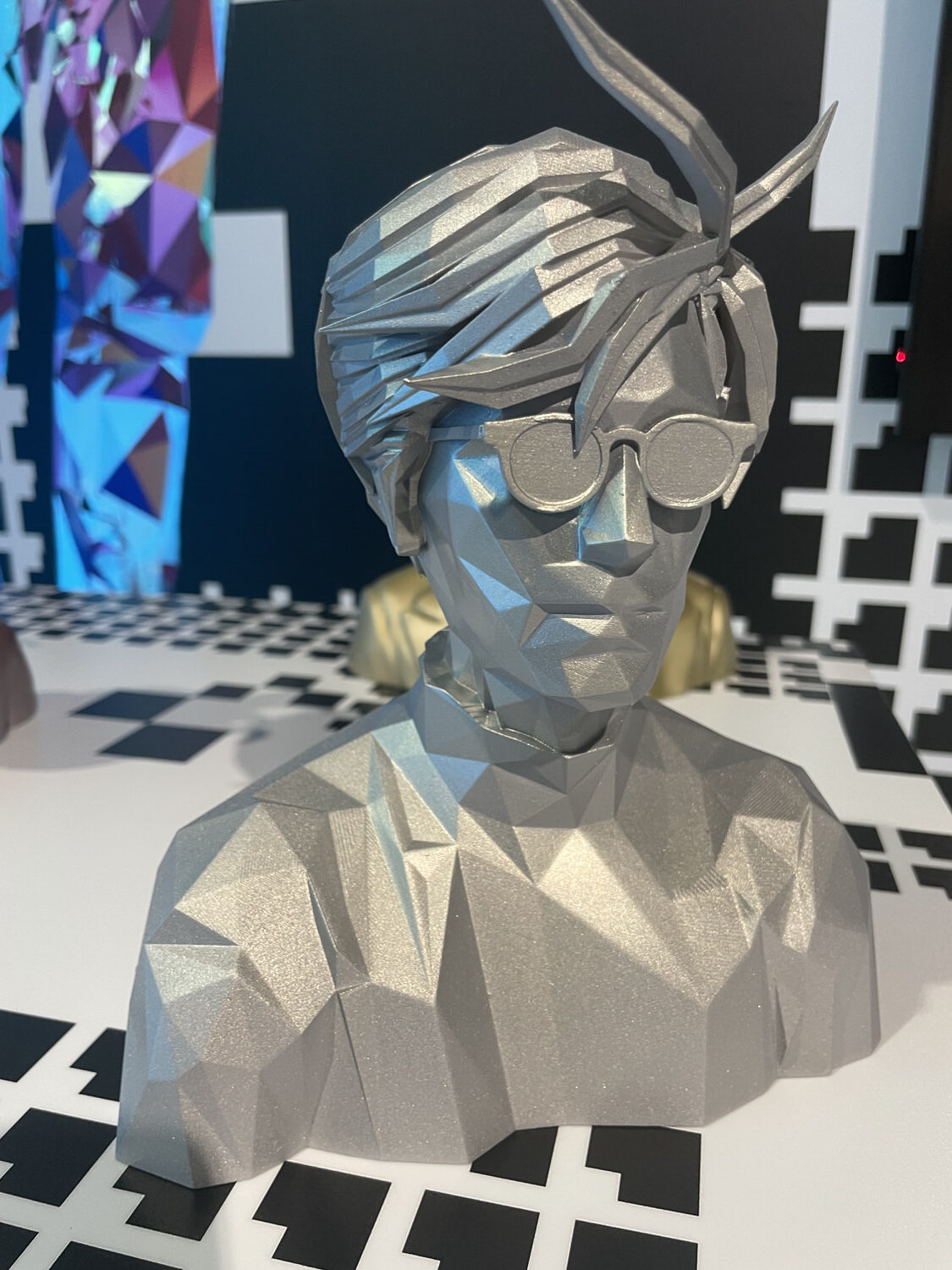
3D-printed Crypto Artist Union sculpture: Warhol by Kenny Schachter
I was so preoccupied with my work—the wall of LED screens showcasing our own metaverse that I commissioned from Zaha Hadid didn’t begin to properly function until visitors poured in—I didn’t manage to do much outside of the convention center. In other words, no NADA, and only a brief tour of Untitled, where I saw cool works at L.A.’s Steve Turner by Jingze Du, priced from $7,500 to $26,000 (I bought a painting), and Kate Klingbeil from $6,500 to $12,000, and at L21 from Mallorca (Spain), ceramics by Mira Mikai.
Just prior to the fair, Art Basel director Marc Spiegler was quoted in the Financial Times downplaying “the impact of technology on the look and feel of the in-person Miami fair,” while nevertheless acknowledging that the “kinetic energy in town is much higher than it was in 2019.” I’m not entirely sure what Spiegler was referring to exactly, unless he too witnessed Louise Monger’s kinematic dancing. However, NFTism reared its head at the booths of François Ghebaly with new works by Neil Beloufa, and at Pace with a collaboration between Studio Drift and D.J. Don Diablo.
Venus Over Manhattan presented an NFT artist who created an enormously successful generative art platform called Artblocks.io that goes by the name Snofro, who exhibited works from his Chromie Squiggles series. Sno’s Squiggles look like gummy worms but have been bought by the likes of serious art collecting hedge funder Alan Howard, for about $3 million each! Gummy worms lead to acidic demineralization of your teeth resulting in expensive dental work—spending millions on something so utterly infantile as Snofro’s Squiggles will similarly end in damage—the financial loss of millions. (If there’s a god, anyway.)
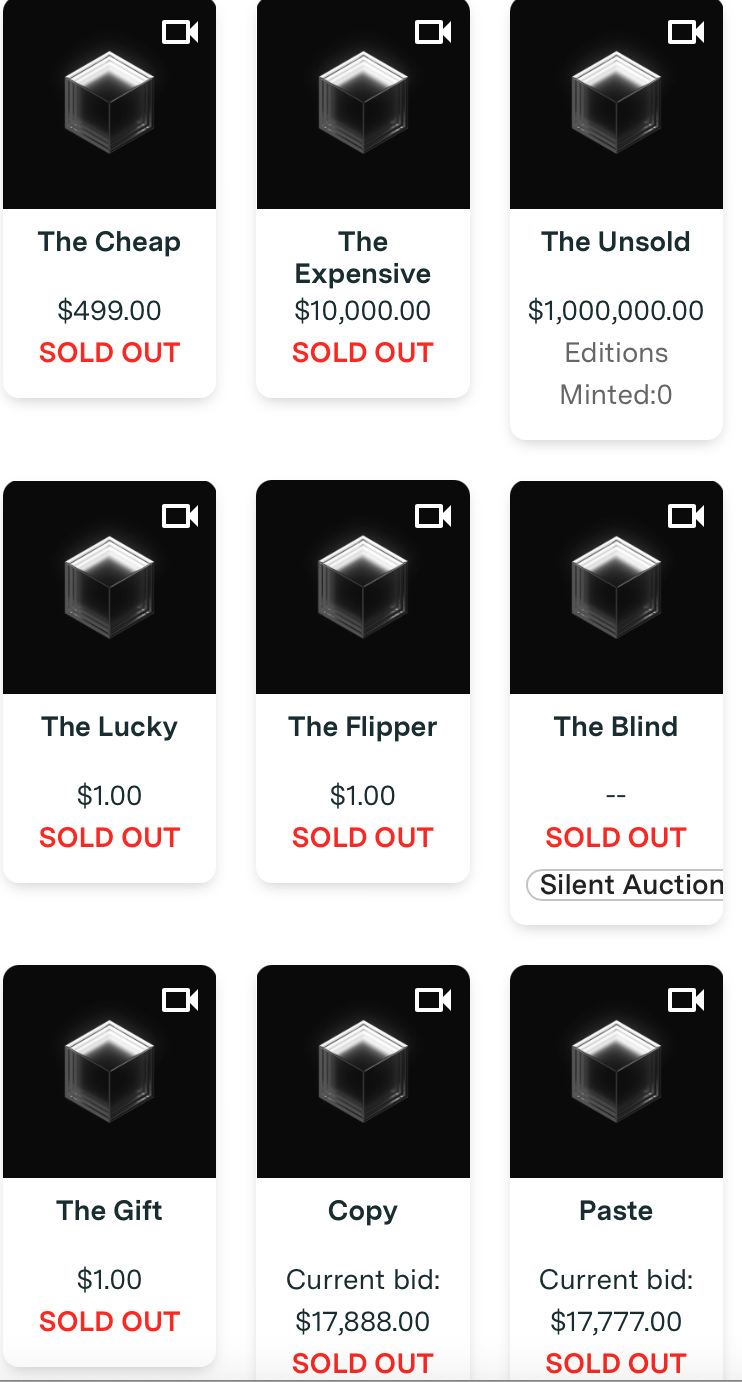
Pak’s The Titles from earlier this year, it’s a no brainer, I’ll take the flipper for $1 please.
If you do want to talk about money, there is the anonymous collective Pak that in 2021 created The Title, nine indistinguishable NFTs with wildly varying prices and edition sizes, throwing into question the seemingly ad hoc characteristics of value in the art market rather than simply staging a cash grab. (They happened to have just sold 266,445 NFTs to 28,000 unique buyers in a matter of days, but that’s a topic for another time.)
According to Reuters, the sales volume of NFTs was $13.7 million in first half of 2020, then shot to $2.5 billion in the first half of 2021, and then meteorically rose to $10.7 billion in the third quarter of this year alone. At this rate, the NFT market will eclipse the breadth of the fine art market, which presently stands at roughly $65 billion, in no more than a few years.
I was at a meal in Miami when I was approached by someone with the refrain “I met you in metaverse.” Minutes later, another diner introduced themselves as a founder of a metaverse amusement park, whatever on earth that might be. Oh right, I stand corrected, it’s not of this planet. The following morning I was invited to a “virtual fashion breakfast,” and whatever the fuck that is, I wanted no part of it.
Meanwhile, the day’s newspaper headline blared: “Metaverse Seoul,” where, “according to plans, residents would be able to make reservations for city-run facilities, ride city tour buses, visit re-creations of destroyed historical sites, file administrative complaints with city bureaucrats and more. Then I stumbled on an ad for “The First Jewish Center in Virtual Reality”. There’s a joke there but I’m not that brave. If anything, I am reminded of the unforgettable dialogue from Mike Nichols’s 1967 film The Graduate: “I just want to say one word to you, just… one word. Are you listening? Plastics. There’s a great future in plastics.”
Assuming the role of professional artist, and for the first time in my life making a living from the sale of my digital works unceremoniously embedded in my Artnet News columns over the years, is not without consequences, as evinced by the following missive I received from a buyer of my work (“collector” isn’t exactly the nomenclature that springs to mind):
Kenny Hi, first of all congrats to you for being represented by Nagel Draxler. Since then you are working with a gallery, and will certainly focus on NFTs, can you both think as to how you can improve your secondary market sales in parallel to new projects. Although I do not like selling an artwork under normal conditions, this is part of the play when it comes to NFTs. There is almost no demand/bid at Superrare (at secondary market) and average prices decresed sifnificantly at Niftygateway for your NFTs. You are the one of the people who will mark the history of art (in my opinion and I really believe that) but market does not reflect that right now. Your NFTs, are great but needs some business planning and support for prices (I can’t believe I wrote this to you, I think NFTs, and crypto markets changed me, I started as a romantic art collector, who likes breakthrough technology and its applications at art but look who I become in a year.
Shoot me, that might do the trick. I think I may take up painting.

